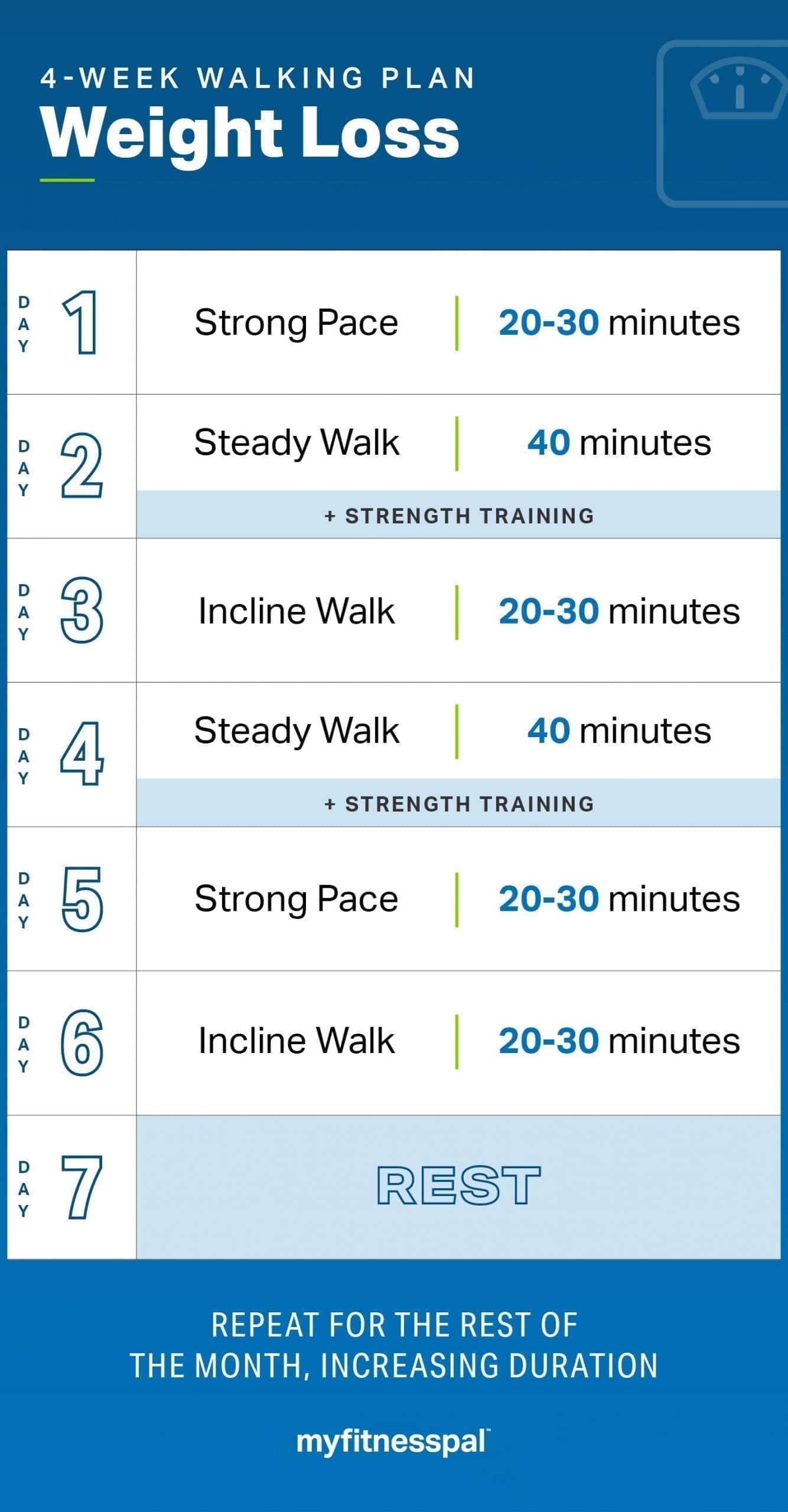The great thing about walking is it has a low barrier to entry: All it takes is a pair of sneakers and some determination to get going. Not only can incorporating it into your regular routine help boost mood levels, but researchers also found moderate-intensity walking showed a similarly visible reduction in risk for high cholesterol, high blood pressure, heart disease and diabetes when compared to vigorous-intensity running.
“While walking may not seem like a glamorous form of exercise, something is always better than nothing,” says Lindsey Clayton, co-founder of Brave Body Project and a New York City-based run coach. “If you’ve made it a habit of skipping the gym and the only exercise you get is walking from your house to the car and back, adding in 10-, 20- or 30-minute sessions will make a difference.”
To help you get started, we’ve created this 4-week plan to help you burn 200–300 calories a session. (Please note: Calorie burn is a general estimate, this number will vary by individual, body composition, effort level, etc. For a more accurate reading, a heart rate monitor or other tracking device may be helpful.)

YOUR GOAL
Each of these walks should burn roughly 200–300 calories and, at the end of the month, you should feel comfortable increasing the walk’s duration, mileage and speed. You can also find ways to make it more challenging, such as adding weights, once you’ve mastered the plan.
STRETCHING
By incorporating simple, dynamic stretches into your pre-walk routine (Clayton suggests knee pulls to your chest, butt kicks without hopping and lateral leg swings for starters), you’re helping your body prepare for the upcoming effort by increasing blood flow to your muscles.
STRONG PACE
By picking up the pace, you will naturally increase your cardiac output and intensity. Start this workout with a 5-minute warmup to get your body moving (3 out of 10 RPE — or rate of perceived exertion), followed with 20 minutes of effort and a 5-minute cooldown.
4 minutes: Walk at a steady, brisk pace (intensity: 5 out of 10 RPE); you should be able to talk, but your breathing will be quick).
4 minutes: Move at steady, brisk pace (intensity: 7 out of 10; you should be able to answer short, brief questions, not carry on a full conversation).
2 minutes: As fast as possible. You shouldn’t be able to hold a conversation at this point.
STEADY STATE
Start this workout with a 5-minute warmup to get your body moving (3 out of 10 intensity), followed with 30 minutes of effort and a 5-minute cooldown. During your steady state walk, intensity should be between a 6 and 7 and you should be able to hold brief conversations. As the month goes on, this walk will feel easier.
STRENGTH TRAINING
Strength-building movements like lunges, squats, planks and pushups can be incorporated into your routine, using only your bodyweight, dumbbells, resistance bands or other gym equipment of your choice.
INCLINE
It’s easy when you have a treadmill available to find a specific incline, set it and get climbing. However, it’s also great to try this one outside. Find a hill in your neighborhood that will take an estimated 3 minutes to walk up. Going at an intensity of 7, walk the hill. Return to the start (going down the hill) at an intensity of 5. Ideally, you’ll be able to complete this cycle at least four times during the day’s workout.
TIPS
It’s important to let this program meet you where you are. Maybe cranking out a 30-minute start-to-finish walk on the first day feels impossible, and that’s OK. “If you tire easily, start slow and work you way up to a higher level. Begin with 5 minutes the first day, 10 minutes the next and up the volume from there,” says Clayton. “Little changes and additions to your walking program will make a big difference.”
On the other hand, if this feels like a breeze, then add resistance with weights. Whether it’s your actual walk or in the strength-training movements, make sure you’ve got the basics of each exercise down before upping the difficulty.
TELL US YOU’RE IN!
Ready to pick up the pace? Tell us you’re in by leaving a comment below. We’re here to help hold each other accountable and offer support.
Make progress on nutrition and fitness goals with our “Plans” feature in the MyFitnessPal app for daily coaching and easy-to-follow tasks.




